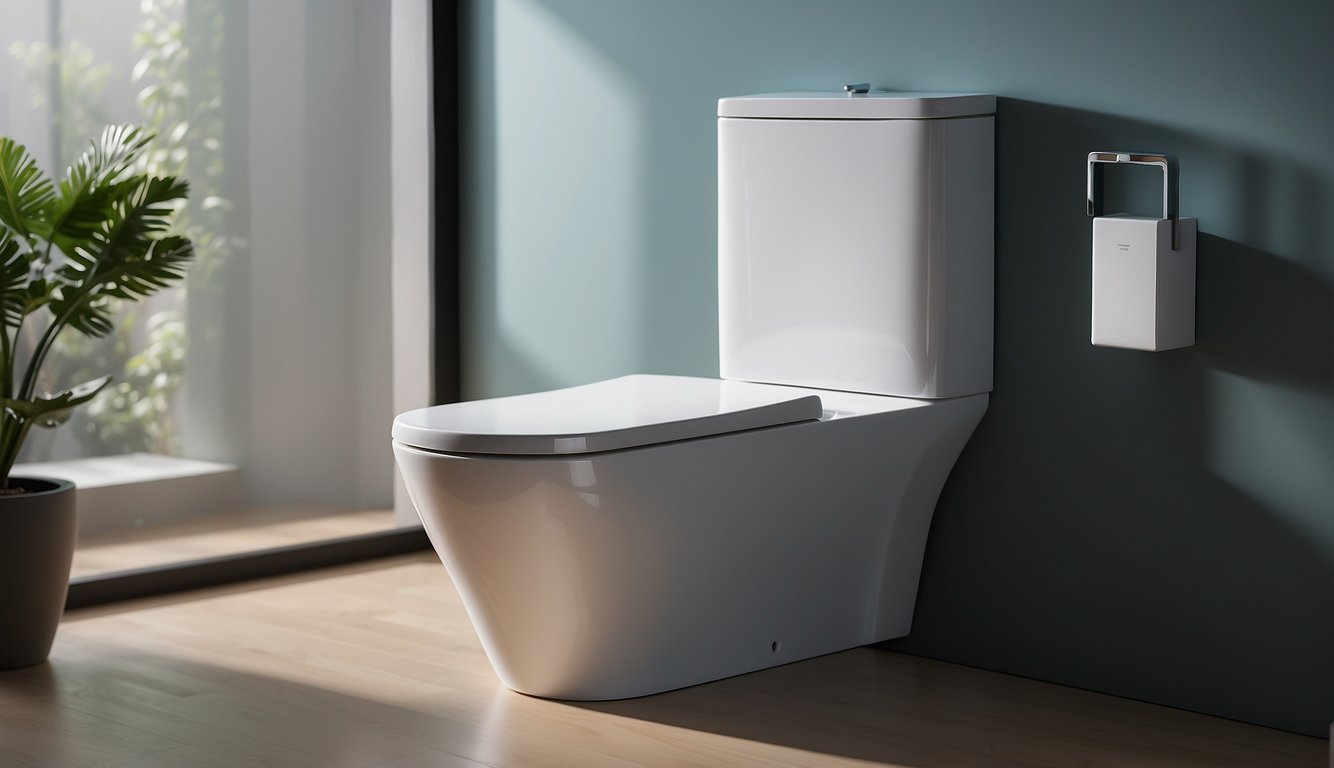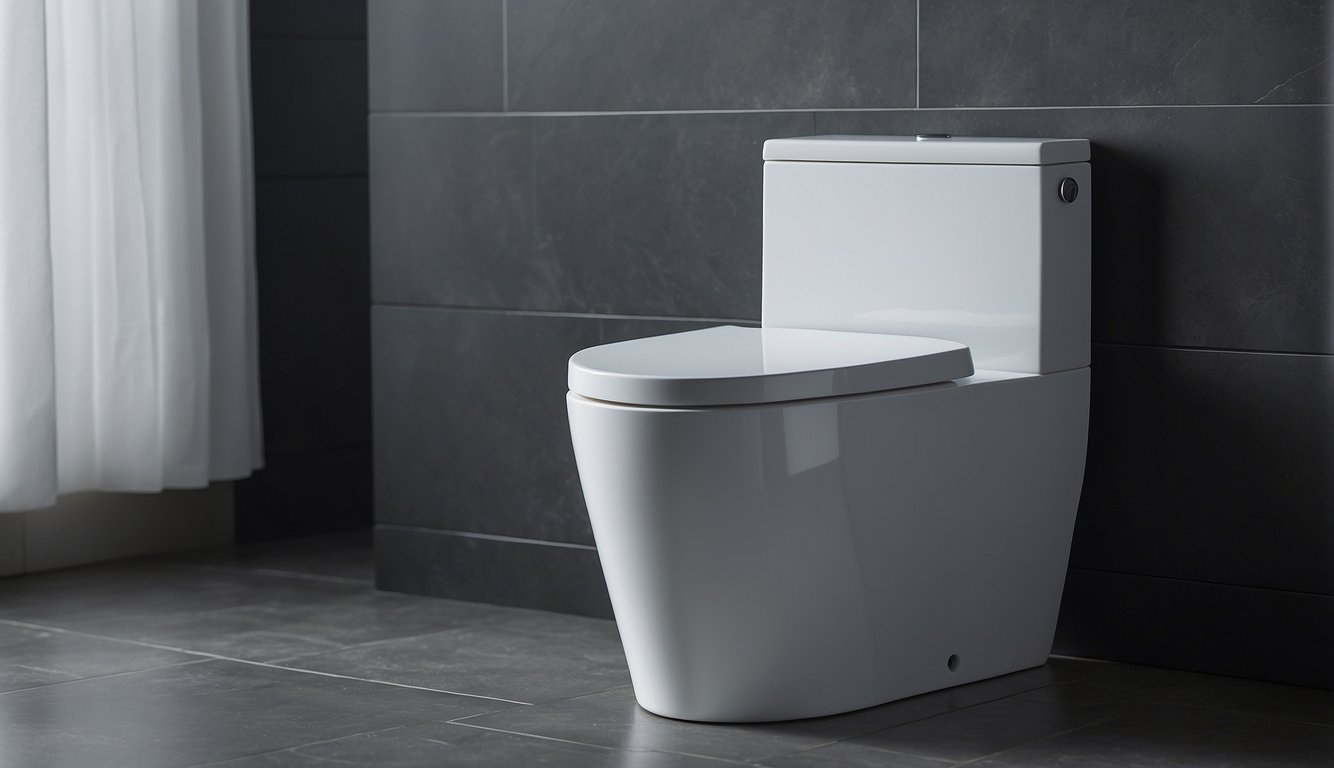Rimless Toilet Disadvantages: Understanding the Potential Drawbacks
As a seasoned expert in the plumbing and bathroom design industry, I’ve witnessed firsthand the rise in popularity of rimless toilets. These fixtures are known for their sleek design and improved hygiene, as the absence of a rim means there are fewer places for bacteria and limescale to hide. The innovative design allows for easier cleaning and a more streamlined appearance—a modern take on the classic toilet.
However, from my professional experience, I’ve observed that rimless toilets aren’t without their drawbacks. One notable disadvantage is the risk of splashback during flushing. This can happen because the water jets that replace the rim can sometimes project water outside of the bowl if not directed properly.
Despite their advanced design, rimless toilets often come at a higher price point compared to their traditional rimmed counterparts, which can be a consideration for budget-conscious consumers.
Design and Functionality Differences
Drawing from my professional expertise in bathroom design, I will highlight key design and function differences between rimless and traditional toilet bowls, focusing on the rimless toilet suite’s innovative features and the comparative aspects with traditional styles.
Innovative Rimless Toilet Design
Rimless toilet suites boast a cutting-edge design devoid of the conventional rim around the top of the toilet bowl. This absence of a rim serves a specific purpose: it simplifies cleaning by minimizing hard-to-reach areas where bacteria and limescale commonly accumulate.
Rimless toilets eject water through a strategically positioned hole around the inner perimeter of the bowl, ensuring efficient and thorough bowl cleaning during each flush. Their design, while similar in appearance to traditional toilets, significantly enhances bathroom hygiene.
- Toilet bowl design: Rimless for easy cleaning and reduced bacteria build-up
- Water flow: Directed from purposefully positioned holes for effective flushing

Comparison with Traditional Toilet Bowls
Compared to traditional toilets, the rimless design impacts both aesthetics and functionality. Traditional toilets have a rim that directs water around the bowl, but this design can harbor germs in concealed spaces.
In contrast, rimless varieties use a direct flush technique that cleans the entire bowl more efficiently. Despite differences, rimless toilets come in numerous shapes and styles just like their traditional counterparts, ensuring that my clients do not have to compromise on personal taste or bathroom decor.
- Hygiene effectiveness: Rimless > Traditional due to no concealed rim
- Aesthetic variety: Comparable in shapes and styles between rimless and traditional
By focusing on the details of design and functionality, my goal is to aid individuals in making an informed decision about whether a rimless toilet suite is the right choice for their bathroom.
Cleaning and Maintenance
When it comes to maintaining rimless toilets, I focus on two main factors: hygiene and ease of cleaning. As a professional with experience in bathroom maintenance, I understand the nuances of keeping these toilets in top condition.
Hygiene Considerations
In the realm of bathroom hygiene, rimless toilet designs are innovative since they lack the hard-to-reach areas under the rim where bacteria and germs typically proliferate.
Traditional toilets often harbor limescale and hidden bacteria beneath their rims, making thorough cleaning challenging. However, a rimless toilet’s open design still requires attention to prevent germ buildup.
- Bacteria Hotspots: While easier to access, the surfaces and inner bowl of a rimless toilet can still host germs. Frequent cleaning is essential.
- Limescale Formation: Water in certain areas can be hard, leading to limescale deposits. With rimless toilets, limescale can be visible on the exposed surfaces, necessitating regular descaling with appropriate cleaning agents.
Ease of Cleaning and Maintenance
From my experience, the maintenance of rimless toilets is often regarded as simpler due to their accessible design. A good brush or sponge can reach all surfaces easily, vital for ensuring a cleaner flush free of hidden limescale and organic build-ups.
- Cleaning Process:
- Frequency: Despite the ease, rimless toilets may require cleaning more often to maintain optimal hygiene.
- Tools Recommended: A firm-bristled brush for scrubbing and a sponge for the bowl and outer surfaces.
In conclusion, while rimless toilets promote better cleanliness, their design translates into frequent, though less laborious, cleaning routines to maintain a hygienic bathroom environment.
Installation and Bathroom Compatibility

When installing a rimless toilet, it’s important to consider not just the ease of installation but also how well it integrates with your bathroom’s design. My hands-on experience affords me insight into both these aspects.
Installation Process
The installation of a rimless toilet is often straightforward. Whether choosing a back-to-wall or wall-hung model, simplicity is key. However, rimless toilets can sometimes present unique challenges.
Wall-hung rimless models, for example, require a sturdy wall mount and may demand additional structural support, which can complicate the installation process. Here’s a simple breakdown of installation steps for a typical back-to-wall rimless toilet:
- Prepare the Area: Ensure the bathroom floor is level and clean.
- Position the Toilet: Place it where it will be installed to mark the fixing points.
- Install the Waste Pipe: Fit the waste pipe to the toilet drainage point.
- Secure the Toilet: Fix the toilet to the floor using the marked points.
- Connect the Water Supply: Attach the cistern to the water supply following manufacturer guidelines.
Bathroom Design Integration
A rimless toilet is a beacon of contemporary design and can meld seamlessly with modern bathroom aesthetics.
My experience has shown me that the minimalist design of a rimless toilet is well-suited to bathrooms that champion a sleek, clean look—often referred to as a “floating toilet” look when wall-hung. However, one of the rimless toilet disadvantages is that it might not align with every bathroom style. Here are considerations to ensure it fits well within your space:
- Measurements: Confirm the dimensions match your available space.
- Style: Choose a model that complements your existing fixtures.
- Finish: Ensure the finish of the rimless toilet matches other bathroom elements for aesthetic consistency.
By taking into account both the installation process and how well the toilet suits your bathroom design, you can make an informed decision about whether a rimless toilet is right for your space.
Economic and Environmental Aspects
In my professional experience with bathroom fixtures, I’ve found that evaluating the economic and environmental impact of a rimless toilet is critical. This section will cover a detailed cost-benefit analysis and the implications of water consumption for the environment.
Cost-Benefit Analysis
When considering a rimless toilet, it’s important to calculate the total cost of ownership beyond the initial price. Budget-conscious consumers should note that while the upfront cost can be higher for rimless toilets, they may offer value for money in the long run due to lower maintenance needs. Here’s a simplified breakdown:
- Initial Purchase Price: Typically more expensive than standard toilets.
- Maintenance Costs: Reduced; less need for cleaning agents due to the hygienic design.
- Long-Term Value: Enhanced; potentially less wear and costly repairs.
Water Consumption and Environmental Impact
My emphasis on conservation has led me to closely examine water usage in household fixtures. Rimless toilets are generally designed with water-saving capabilities, ensuring that each flush uses water more efficiently. This directly impacts the water conservation efforts and minimizes the environmental footprint. The following data highlights the comparison:
- Standard Toilets: Approx. 1.6 gallons per flush (GPF)
- Rimless Toilets: Around 1.28 GPF or less, signifying notable water savings
By integrating a rimless toilet into your home, you actively contribute to environmental sustainability while potentially reducing your water bill.
Let Us Know How We’re Doing!
Did this expertly prepared resource answer your question?
Do you have another question about home maintenance, home improvement projects, home appliance repair, or something else?
Get more information, send in questions and keep the discussion going by contacting the I’ll Just Fix It Myself company customer service team at at 1-800-928-1490 or Email us at [email protected]
